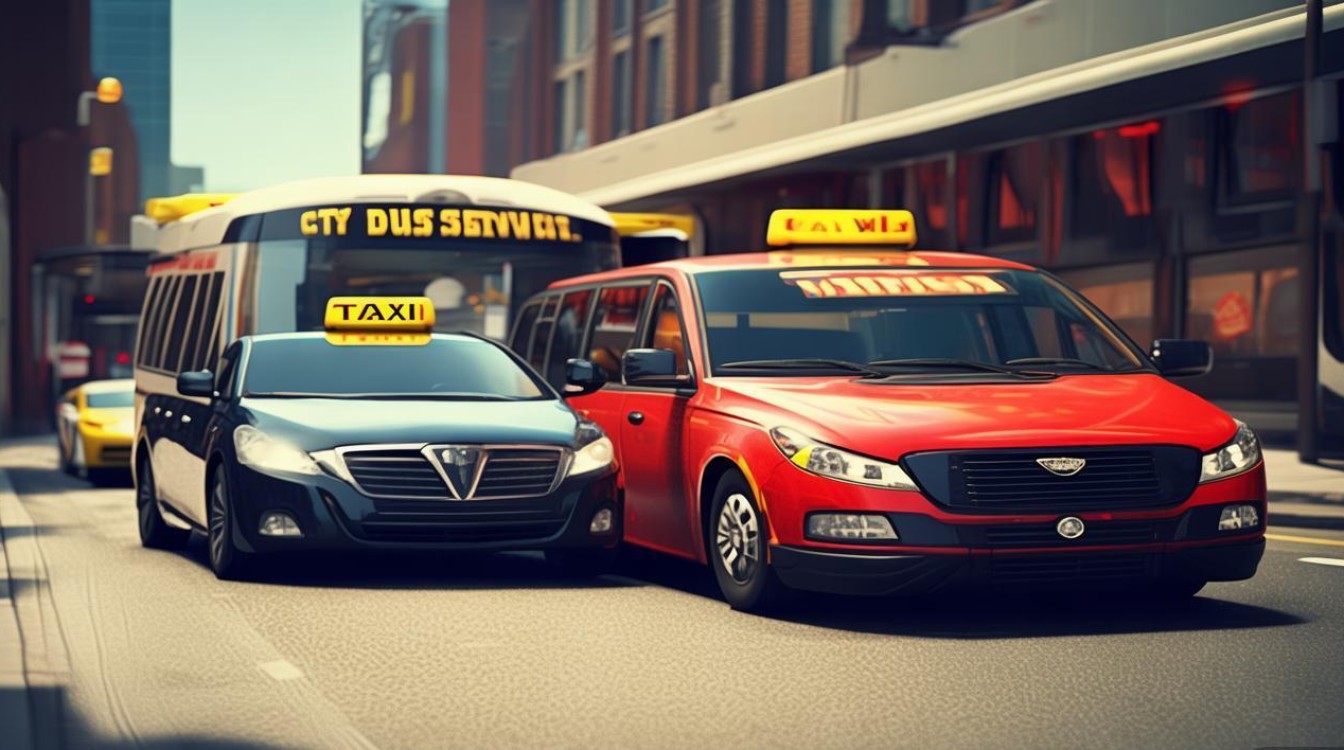在雅思口语考试中,"bus or taxi" 是一个高频话题,它不仅考察考生对交通工具的基本认知,更涉及对比分析、个人偏好及社会现象的深度探讨,无论是Part 1的日常对话,还是Part 2的个人经历描述,亦或Part 3的社会议题延伸,考生都需要展现逻辑清晰、表达流利的语言能力,本文将从多个维度解析这一话题,帮助考生构建全面且有深度的回答框架。

基础信息对比:Bus与Taxi的核心差异
要深入讨论bus与taxi,首先需明确两者的基本属性,以下从多个维度进行对比,为后续分析奠定基础:
| 对比维度 | Bus(公交车) | Taxi(出租车) |
|---|---|---|
| 费用 | 票价固定,通常按线路或里程计费,价格较低(如2-5元/程) | 按里程或时间计费,起步价较高(如8-12元),随拥堵程度浮动 |
| 灵活性 | 固定线路、站点,需按时刻表运行,灵活性较低 | 门到门服务,可随时随叫随停,路线灵活 |
| 舒适度 | 人员流动性大,空间相对拥挤,高峰期体验较差 | 独立空间,私密性强,可调节空调、音乐,舒适度较高 |
| 环保性 | 运载量大,人均碳排放低,符合绿色出行理念 | 单次乘坐碳排放高,若乘客少则资源利用率低 |
| 安全性 | 公共交通系统规范,事故率相对较低 | 司机资质参差不齐,需注意选择正规平台或扬招点 |
雅思口语Part 1:高频问题与回答策略
在Part 1中,考官通常会围绕"bus or taxi"提出基础问题,考察考生的日常经历与简单观点,以下是常见问题及回答思路:
Do you often take buses or taxis?
回答思路:明确偏好 + 简述原因 + 具体场景。
参考回答:
"I usually take buses more frequently than taxis. The main reason is that buses are more affordable and convenient for my daily commute, especially since I study near a bus stop. For example, I take Bus No. 26 every morning to get to campus, which costs only 2 yuan and takes about 20 minutes. Taxis are more of a backup option when I’m in a hurry or carrying heavy luggage."
What do you think of the bus service in your city?
回答思路:总体评价 + 具体优点/缺点 + 改进建议(可选)。
参考回答:
"The bus service in my city is generally reliable, with extensive routes covering most areas. However, during rush hours, buses can be overcrowded, and the air quality inside might be poor due to limited ventilation. I hope the transport authority can add more electric buses and improve the frequency during peak times to enhance the experience."
When would you choose to take a taxi instead of a bus?
回答思路:特定场景 + 对比优势 + 个人感受。
参考回答:
"I’d opt for a taxi when I need to travel late at night, as buses stop running around 10 PM, and it’s safer than walking alone. For instance, last month, I took a taxi back from the library after 11 PM because the bus service had ended. The driver was professional, and the direct route saved me a lot of time compared to waiting for a night bus."
雅思口语Part 2:个人经历类话题展开
Part 2常要求描述一次具体的乘坐经历,需注重细节描写与情感表达。"Describe a time you took a bus or taxi to a place."
回答框架与示例:
事件背景:时间、地点、原因。
"Last summer, I took a taxi from my hometown to the high-speed railway station to catch a train to Beijing. It was my first time traveling alone, and I was a bit nervous about making it to the station on time."
过程细节:交通工具特点、乘车中的见闻或互动。
"I booked a taxi through a ride-hailing app, and the driver arrived within 5 minutes. The car was clean and air-conditioned, which was a relief on a 35°C day. During the ride, the driver was friendly and even gave me tips on avoiding traffic jams, suggesting an alternative route that saved us at least 20 minutes."
结果与感受:是否顺利、带来的影响或启发。
"We arrived at the station 40 minutes before the train departed, which made me feel relieved and confident. This experience taught me the convenience of modern taxi services and the importance of planning ahead for long-distance trips."
雅思口语Part 3:深度讨论与社会议题
Part 3要求考生就话题展开抽象讨论,需结合社会现象、政策影响或未来趋势进行分析,以下是常见问题及回答思路:
Do you think taxis will be replaced by self-driving cars in the future?
回答思路:观点 + 现有优势/劣势 + 未来趋势 + 过渡期分析。
参考回答:
"I believe self-driving cars will gradually replace traditional taxis, but it won’t happen overnight. Currently, self-driving technology has made progress in safety and efficiency, especially in fixed routes like airports or downtown areas. However, challenges remain, such as handling complex urban traffic and unexpected situations, which human drivers can manage better. In the transition phase, we might see a mix of self-driving and human-driven taxis, with the former dominating in controlled environments."
How can the government improve public transportation like buses?
回答思路:具体措施 + 预期效果 + 社会价值。
参考回答:
"To improve bus services, the government could invest in three key areas: First, upgrading the fleet to electric or hybrid buses to reduce pollution and lower operating costs. Second, optimizing route planning based on passenger flow data, adding more services in residential and emerging commercial areas. Third, integrating bus services with other transport modes, like bike-sharing and metro systems, through seamless payment platforms. These measures would not only enhance efficiency but also encourage more people to choose public transport over private cars, easing traffic congestion."
FAQs相关问答
Q1: 在雅思口语中描述bus或taxi时,如何避免内容重复?
A: 可从多角度切入细节:
- 感官描写:bus的拥挤与taxi的安静("On the bus, I’m often squeezed among passengers with the smell of breakfast, while in a taxi, I can enjoy my music without distractions");
- 功能差异:bus适合通勤,taxi适合紧急情况("Buses are my go-to for daily routines, but taxis are lifesavers when I miss the last train");
- 社会意义:bus体现公共服务,taxi反映个性化需求( "Buses symbolize inclusive urban development, while taxis highlight the need for flexible transport options"),通过切换描述维度,可丰富内容层次。
Q2: 如何用复杂句式提升"bus or taxi"话题的分数?
A: 结合语法结构展示语言能力,
- 条件状语从句: "If the bus service were extended to midnight, I wouldn’t have to rely on taxis for late-night outings."
- 非限制性定语从句: "Taxis, which offer door-to-door convenience, are more expensive but save time during peak hours."
- 虚拟语气: "Had I not taken a taxi that rainy day, I would have been soaked waiting for the bus."
注意自然融入,避免堆砌,确保句子逻辑连贯。
通过以上分析,考生可围绕"bus or taxi"话题构建从基础到进阶的回答体系,结合具体例子与社会视角,展现语言能力与思维深度,在雅思口语中脱颖而出。











